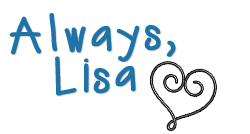How to close read a novel
with your whole class
Choose wisely
Start with a great novel with a topic that your kids are interested in. If you want to build empathy, try reading Wonder, Rain, Reign or A Fish in a Tree.
Are your kids excited about learning about WW2?
Try reading The Cay.
Do you want your Latino students to relate?
Try reading Tequila Worm or Esperanza Rising.
Animal lovers? Read The One and Only Ivan.
Do you want to talk about the refugee crisis?
Read aloud Inside Out and Back Again.
How about building an appreciation for the classics? Read Alice in Wonderland.
How many do I need?
A class set is preferable but it's not necessary.
Ten would be fine and kids can share. Or buy ebooks and have kids read them on digital devices.
Read together
Bring your kids together on the rug to read. I
t's a great way to build community.
I have pillows and kids are allowed to lay down or sit.
Read with passion
Read with passion! If you're bored, so are they.
Read it loud and powerfully. Make the kids feel the anger, the sadness, the intensity the author intended.
Pivotal Parts only
Close reading happens about once a week.
You do not want to do more than that.
Let the kids have a love of the literature.
As for the close reading,
after we've read a pivotal part of the book,
I have the kids close read a small part.
We read it aloud together.
Then they discuss it with a peer before they annotate.
Make sure your focus question is meaty
and makes the kids think.
I like to copy the text on the left
and have kids annotate on the right.
Do the first ones together so they understand what a
good close reading of the text looks like.
They need to see good ideas clearly supported with text evidence.
This is what my rubric looks like for scoring:
Rubric for Close Reading
Score Analysis
4
· • plenty of annotations
· • focus question is answered clearly
· • Ideas are supported with textual evidence
· • important style elements marked:
diction, imagery, structure, figurative
language
· • thoughtful/shows effort
3
· • annotations are present
· • Ideas are there but connections to textual evidence are fuzzy
· • style elements marked: may be incomplete
· • focus question response may be limited
2
· • Unfinished
· • Ideas are limited and literal; no in depth thinking
· • Focus question response may be off the mark
1
· • Most of it is unfinished
· • Focus question response is not done or incomplete
I hope this was helpful.
Do you need more help?
Check out my close reading guides!
I've already chosen the most pivotal parts
and created the focus questions.
It's all done for you to make it easy
to get deep with the literature.

















No comments:
Post a Comment